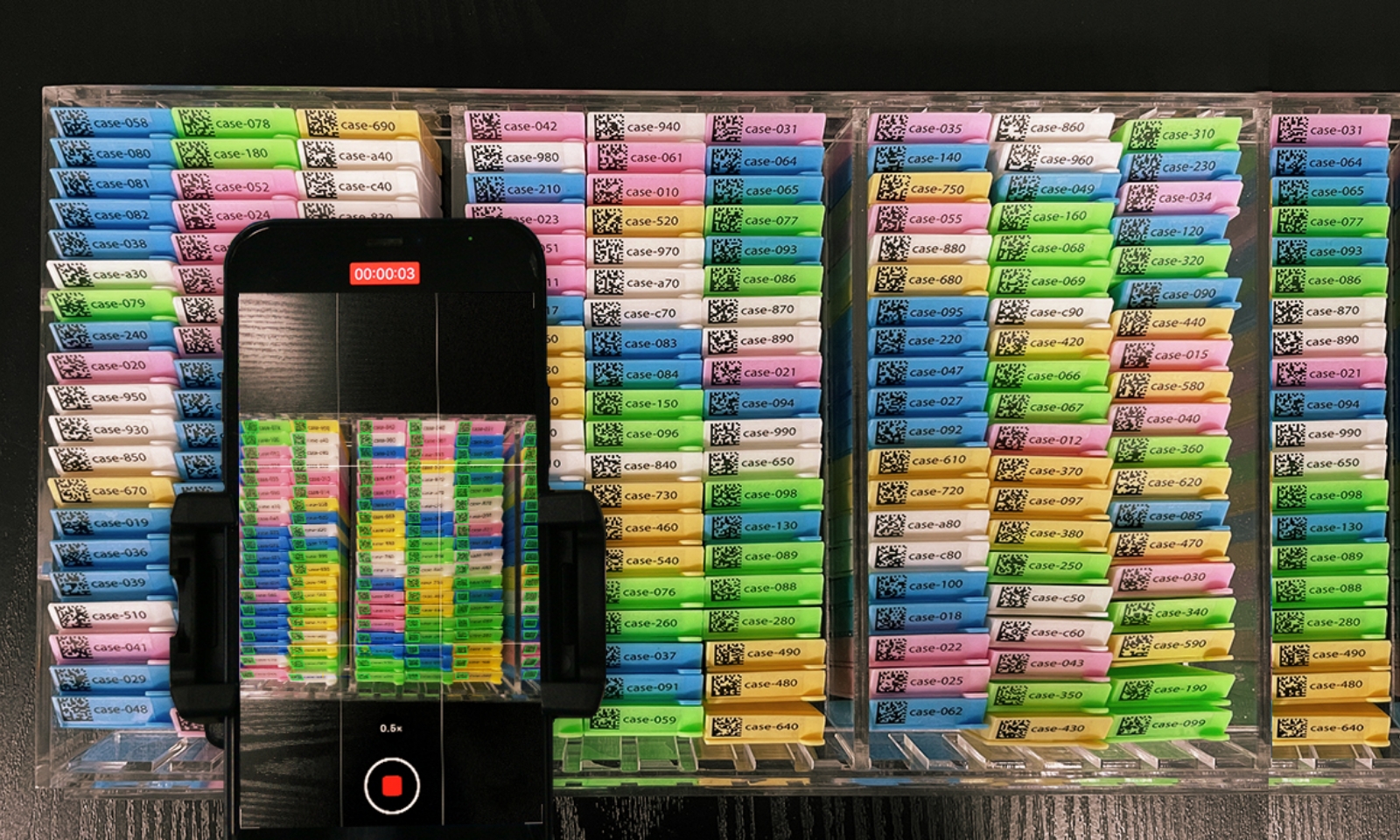Exceptional Accuracy for Bio Sample Traceability
Traceability is a critical component of lab operations, enabling the identification and tracking of samples throughout lab processes. Barcodes have become an essential tool for achieving full traceability in labs, streamlining processes, reducing risk of human error and ensuring compliance with regulatory standards. For barcoding to succeed, accuracy is key.


Barcode Reading that Excels in Lab Conditions
Reading barcodes in labs can be challenging due to several factors. Reading barcodes on very small containers such as vials, tubes, bags, cassettes and slides can be tricky due to their size, shape and placement. Lighting conditions may be less than optimal. Barcode labels may also become worn or damaged during storage and transit - all affecting readability. Dynamsoft Barcode Reader is designed for optimal accuracy in these demanding lab conditions.
Batch Sample Tracking for Sakura Finetek
With Dynamsoft’s customized SDK, within 20 seconds, we can scan up to 180 2D DataMatrix barcodes printed on tissue cassettes that are placed at a 45° angle to the iPhone lens with better than 99.9% accuracy.
-Michael Yang, Sr. Engineering Project Manager
Mobile Data Capture for Lab Operations
High Accuracy with Challenging Lab Barcodes
Dynamsoft Barcode Reader is optimized for accuracy in lab conditions, providing fast, reliable data capture of tiny, rounded, angled and damaged barcodes. We support the full range of 1 and 2D barcodes most commonly used in labs, and are frequently chosen for outstanding accuracy with Data Matrix codes.
From collection to analysis and from storage to transit and disposal, many lab ops are migrating to mobile devices. Dynamsoft Barcode Reader enables fast mobile data capture throughout the lab ops process.
Fast, mobile
data capture
Scan vials, tubes, bags,
slides or cassettes
Scan tiny, Data
Matrix codes

Used by Leading Labs and Research Organizations

Sakura Finetek needed to scan 150 angled Data Matrix codes accurately in 20 seconds and present the findings in a panoramic view.
Naturalis ARISE chose Dynamsoft Barcode Reader for its high accuracy, offline scanning of tiny Data Matrix codes for biodiversity sample collection.

Takeda, a world leading pharma company, integrated our barcode reader into their inventory system to read large arrays of sample vials, cutting scan time down by 75%.

Batch Barcode Scanning for Lab Inventory
If you need to scan large batches of inventory and have zero tolerance for inaccuracy, our new batch scanning solution achieves close to 100% read rates for 100+ barcodes.
Any unrecognized or missed barcodes are highlighted and can be quickly re-scanned, with the results seamlessly integrated into a panoramic image. Our Batch Barcode Scan solution is 50x faster than manual scanning, boosting lab productivity while minimizing errors.
Scan 100+
barcodes with near
100% read rate
Scan batches 50x
faster than manual
scanning
Quickly identify
any missing
barcodes
Finding a good Data Matrix reader was not easy. With Dynamsoft Barcode Reader, we scan batches of 100 Data Matrix codes with close to 100% accuracy.
– Ellen Jameson, Senior Research Associate,
Global Compound Management & Lab Automation, Takeda


